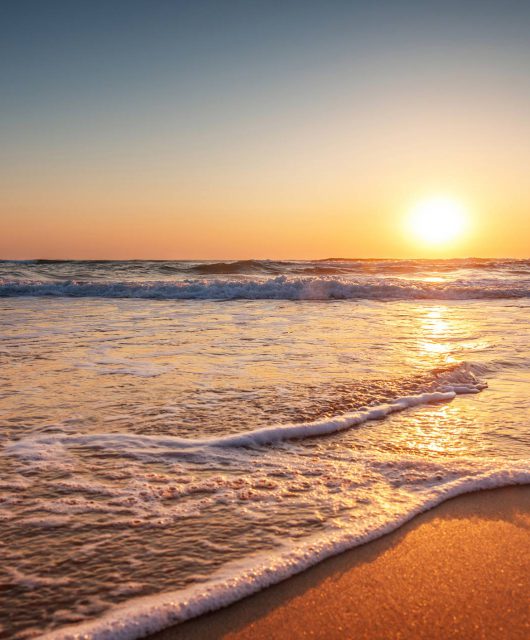The ocean is absolutely huge! As humans living mostly on land, we often overlook the fact that approximately 70% of the Earth is covered by salt water – that’s 363 million km2 ! Additionally, the average depth of the ocean is 3,720m with the deepest part, known as Mariana’s Trench, which is located in the western Pacific Ocean off the coast of the Philippines and Japan is 11,033m deep – that’s 11kms!
Features of the Ocean
The ocean can be classified into various different categories based on its physical conditions. From the land, these categories are:
- Intertidal or Littoral – located from high tide to low tide areas. Important ecosystem for plants and animals such as crabs, barnacles, muscles etc.
- Continental shelf – located from low tide to the edge of the shelf
- Continental slope – where the ocean bottom slopes steeply to the ocean floor
- Abyssal plane – the ‘bottom’ of the ocean where it is relatively flat
- Hadal zones – regions where there are deep trenches in the abyssal plane

Seamounts and ridges create lots of underwater topography in the ocean. Seamounts are mountains that rise steeply (at least 1000m) from the ocean floor and are usually extinct volcanoes. These ocean features are extremely important because they create habitat diversity in the middle of relatively flat, pelagic ocean habitat. There are a large number of seamounts in the world. In fact, the largest mountain in the world is located in the ocean – Mauna Kea, is an inactive volcano on the island of Hawaii. It’s 4,181m above sea level but measures a total of 10,141m from the ocean floor to its summit – 1,345m taller than Mount Everest! The mid-oceanic ridge is an underwater mountain range at the centre of most oceans. It is where the seafloor is created from within the earth and comes to the surface. This is also known as the oceanic spreading centres because the seafloor is pushed and spread out from here.
Salinity
The ocean also has a unique feature; it’s saltiness! Unlike freshwater rivers and lakes, the ocean is salty. Every kilogram of ocean water has approximately 35 mg of salt in it and makes it denser than freshwater and more resistant to freezing (freezes at about -2°C). Marine animals such as sharks, sea turtles and sea birds have specialized salt glands that allow them to get rid of the excess salt. In turtles, this gland is located in their eye cavity and in sea birds this gland is located near their nostrils.
Pressure
Due to the immense amounts of water located in the ocean and extreme depths, there is lots of pressure. For every 10 metre of water depth, the pressure increases by the amount of pressure we experience out of water (at sea level). For example, at 20m, there is 3 times as much pressure and at 100m there is 11 times as much pressure. Since leatherback turtles can dive as deep as 1,200m, they have specialized adaptations, such as collapsible lungs, flexible shell and onboard stores of oxygen in blood and muscle to deal with the immense pressure associated with these depths.
Tides

The ocean is constantly moving. The gravitational pull of the sun and the moon especially affects our oceans. As they change position relative to the earth, they cause water to either pile up or smooth out, which causes tides. Most parts of the world have two high tides and two low tides each day, but some areas of the world may only have one each day or none at all. The Bay of Fundy, located on the Atlantic coast of North America between New Brunswick and Nova Scotia have the highest tidal range in the world with an average range of 14.5 metres. Tides are affected by the shape of the shoreline as well as the topography of the ocean floor.
Ocean Currents
Ocean currents are continuous, directed movements of seawater. Most currents flow for long distances and play an important role in determining the climate and temperature of many of the Earth’s regions in which they flow through. Ocean currents are driven by temperatures, the Earth’s rotation, wind, differences in water densities and tides. The Gulf Stream, located in the North Atlantic, is a well-known ocean current that originates at the tip of Florida and follows the eastern coastline of North America to Newfoundland before crossing the Atlantic Ocean. It is thought to be responsible for warm conditions in Western Europe.
Due to its enormously large size, extreme depth and various features, researchers have only studied 5% of our oceans! As technology advances, scientists have already started to discover more about what lies out there! To learn more about the ocean and leatherback turtles, follow the Great Canadian Turtle Race at www.turtlerace.ca!






3 comments
What a fascinating read! I loved learning about the various ecosystems within our oceans and how they connect us to so many incredible species. It’s amazing to think about the role each creature plays in maintaining the balance of marine life. Thank you for shedding light on such an important topic!
I absolutely loved this post! It’s fascinating to learn about the diverse wildlife in our oceans and how interconnected we all are. The way you highlighted different marine species really brings to light the importance of ocean conservation. I can’t wait to share this with my friends!
What an insightful post! I love how you highlighted the incredible biodiversity in our oceans and the importance of conserving these ecosystems. It’s inspiring to see the connections between our daily lives and the wildlife that inhabits our oceans. Looking forward to exploring more about this fascinating topic!